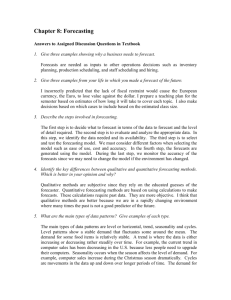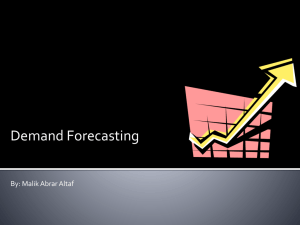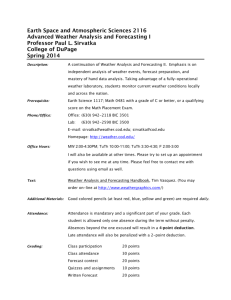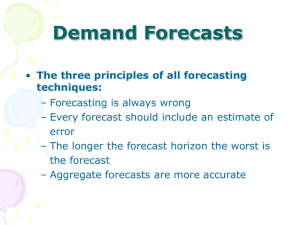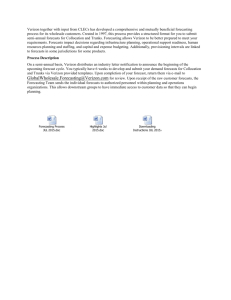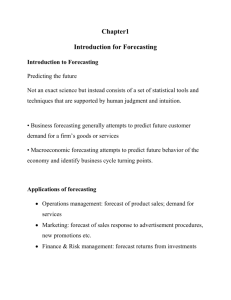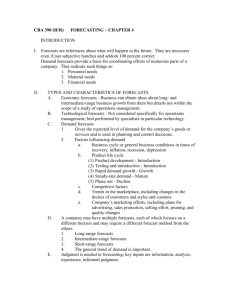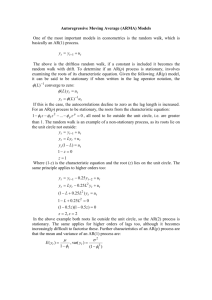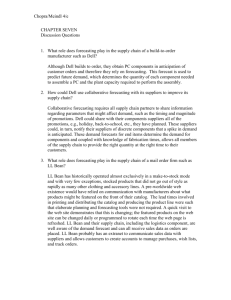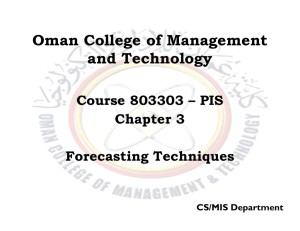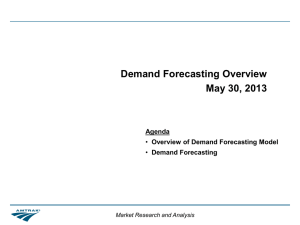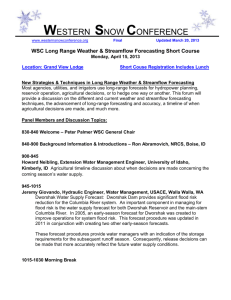FORECAST - Assumption University
advertisement
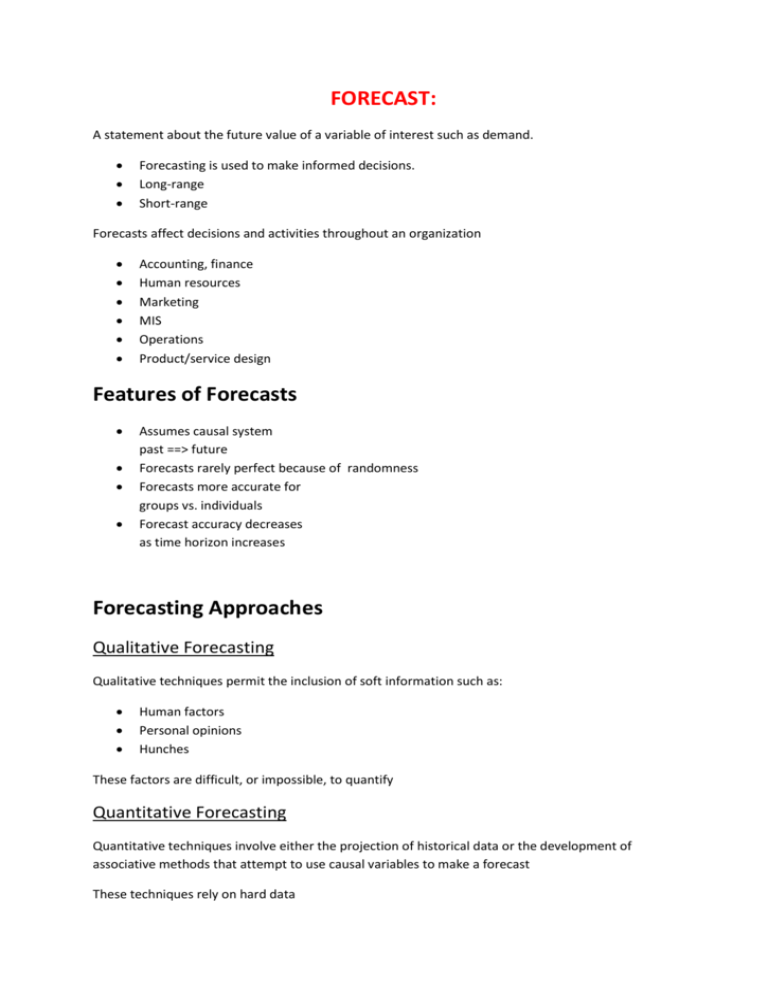
FORECAST: A statement about the future value of a variable of interest such as demand. Forecasting is used to make informed decisions. Long-range Short-range Forecasts affect decisions and activities throughout an organization Accounting, finance Human resources Marketing MIS Operations Product/service design Features of Forecasts Assumes causal system past ==> future Forecasts rarely perfect because of randomness Forecasts more accurate for groups vs. individuals Forecast accuracy decreases as time horizon increases Forecasting Approaches Qualitative Forecasting Qualitative techniques permit the inclusion of soft information such as: Human factors Personal opinions Hunches These factors are difficult, or impossible, to quantify Quantitative Forecasting Quantitative techniques involve either the projection of historical data or the development of associative methods that attempt to use causal variables to make a forecast These techniques rely on hard data Types of Forecasts Judgmental: uses subjective inputs - Executive opinions - Sales force opinions - Consumer surveys - Outside opinion - Delphi method o Opinions of managers and staff o Achieves a consensus forecast Time series: uses historical data, assuming the future will be like the past - Trend - Seasonality - Cycles - Irregular variations - Random variations Trend A long-term upward or downward movement in data - Population shifts - Changing income Seasonality Short-term, fairly regular variations related to the calendar or time of day Restaurants, service call centers, and theaters all experience seasonal demand Cycle Wavelike variations lasting more than one year These are often related to a variety of economic, political, or even agricultural conditions Irregular variation Due to unusual circumstances that do not reflect typical behavior - Labor strike - Weather event Random Variation Residual variation that remains after all other behaviors have been accounted for Time-Series Forecasting Naive Forecasts The Naive forecast ignores all data points in a time series except the last one. Forecast = Last value Averaging Simple Moving Average Weighted Moving Average Exponential Smoothing Associative models: uses explanatory variables to predict the future Linear Regression Assumptions o o o o o o o Variations around the line are random Deviations around the line normally distributed Predictions are being made only within the range of observed values For best results: Always plot the data to verify linearity Check for data being time-dependent Small correlation may imply that other variables are important








